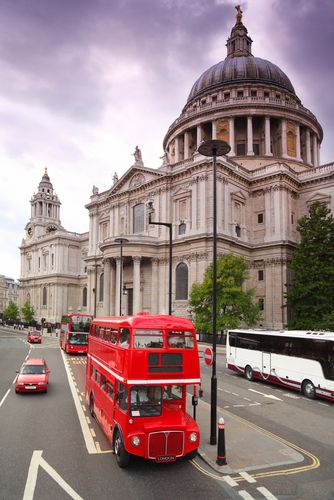 In a groundbreaking move, the Church of England has announced plans to establish a £1 billion fund aimed at confronting its historical ties to the slave trade. This initiative marks a significant shift in the church's approach to addressing its past involvement in African chattel enslavement, following criticisms of previous efforts as inadequate. With a commitment ten times larger than before, the church aims to channel funds into supporting disadvantaged Black communities and addressing the profound impact of slavery.
In a groundbreaking move, the Church of England has announced plans to establish a £1 billion fund aimed at confronting its historical ties to the slave trade. This initiative marks a significant shift in the church's approach to addressing its past involvement in African chattel enslavement, following criticisms of previous efforts as inadequate. With a commitment ten times larger than before, the church aims to channel funds into supporting disadvantaged Black communities and addressing the profound impact of slavery.
What Is the Church of England?
The Church of England, also known as the Anglican Church, is the established Christian church in England and the mother church of the worldwide Anglican Communion. It traces its roots back to the 6th century when Christianity was first introduced to the region. The Church of England emerged as a distinct entity during the English Reformation in the 16th century.
Today, the Church of England is a diverse and inclusive institution with a broad spectrum of theological beliefs and practices. The Archbishop of Canterbury is the head of the church, overseeing the various diocese and their corresponding bishops.
The church plays a prominent role in English society. Its clergy provide pastoral care, conduct religious ceremonies, and engage in social and charitable work across the country.
How Was the Church of England Involved in the Slave Trade?
During the height of the trans-Atlantic slave trade, the Church of England invested in the South Sea Company, which held a monopoly on transporting enslaved individuals from Africa to Spanish-controlled ports in the Americas. Between 1714 and 1739, the South Sea Company trafficked thousands of enslaved people on numerous voyages. The Church of England directly benefited from the profits of the South Sea Company and accumulated wealth as a result.
Additionally, the Church of England received donations from individuals who had amassed fortunes through the slave trade, further intertwining its financial interests with the institution of slavery. For example, one of the church's benefactors was Edward Colston, a British slave trader whose statue in Bristol was toppled by anti-racism protesters in 2020. These historical connections underscore the church's complicity in the exploitation and trafficking of enslaved people.
What Will £1 Billion Fund Do?
The Church of England has announced that it will commit £1 billion to a Fund for Healing, Repair, and Justice. This fund will prioritize supporting disadvantaged Black communities, investing in initiatives that aim to empower individuals and organizations working within these communities. This includes backing social entrepreneurs, educators, healthcare providers, asset managers, and historians who are dedicated to addressing the systemic inequalities and injustices that continue to impact Black lives today.
With this fund, the Church of England is acknowledging the long-term impacts of slavery. However, some critics are not satisfied with what the church has planned for this large sum of money.
Will the Fund Pay for Reparations?
While the Church of England's Fund for Healing, Repair, and Justice represents a substantial financial commitment to the Black community, it falls short of meeting demands for direct reparations to descendants of the enslaved. This reflects some of the issues discussed in the ongoing debate surrounding the responsibility of institutions and governments in addressing historical injustices.
Many activists and scholars argue that giving monetary compensation to individuals is the only effective way to impact the lives of Black people who have been systematically oppressed for centuries. The Church of England does not appear ready to take that step.
The establishment of this fund signals a broader acknowledgment by the Church of England of its complicity in the trans-Atlantic slave trade and its commitment to justice, equity, and peace. While the fund's objectives may not fully satisfy all demands from critics, they represent a significant step towards reconciliation within the context of the church's history.